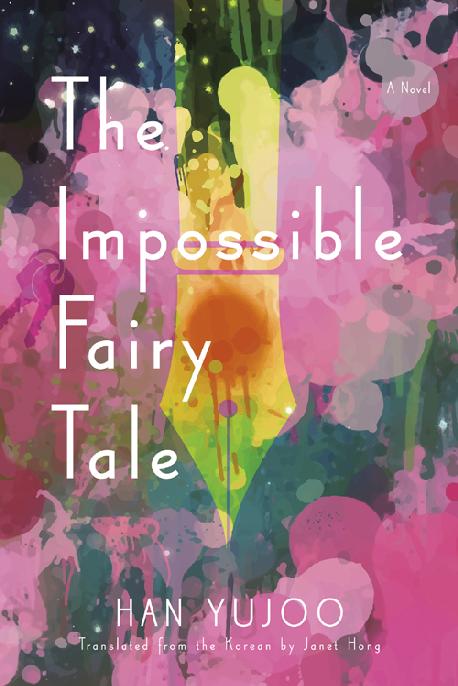
The Impossible Fairy Tale
A Novel
کتاب های مرتبط
- اطلاعات
- نقد و بررسی
- دیدگاه کاربران
نقد و بررسی

January 9, 2017
“If you’re going to write about love, write it in pencil.” Such is the philosophy of the little girl named Mia, who receives 72 colored pencils at the beginning of South Korean writer Han Yujoo’s extremely strange novel. We’re told that Mia has both the power to kill and the power to save, that she has two fathers, and that the year is 1998; Mia’s world also seems to be contained inside the dream of one of her teachers. But whether in dream, reality, or in the scenes Mia fills with pictures and colorful secrets, she is pursued by her opposite, the sadistic and nameless Child, who murders animals and sabotages her classmates’ work, filling their assignments with threats and rumors. Where Mia uses art to create, the Child uses it to kill, and the two of them play a sinister game of cat and mouse in the classroom and in the mysterious Building 101, which exists both in the real world and in a fantasy hatched by a dreamer whose awakening brings yet another dimension into focus. The Impossible Fairy Tale occupies a destabilizing, often inscrutable terrain where “dreams without origin pass by” and “sleep recedes,” where “No sentence is clear. Or unclear.” This transfixing experimental novel questions where sleep ends and books begin, a concept borrowed from the works of French writer Maurice Blanchot, and the atmosphere of nightmarish dread and penetrating weirdness recalls a David Lynch film.

January 1, 2017
Korean short story writer Yujoo's debut novel paints a brutal picture of childhood within a metafictional frame.In "an ordinary residential area in a city outside Seoul" in 1998, two 12-year-old girls keep journals for their school assignment. One, described as "lucky," has 72 German watercolor pencils and a sweater with a deer on it. Her name is Mia. The other, "simply luckless," carries scars and bruises beneath her clothes and is referred to starkly as the Child; "she forces the stinging, burning pain aside by creating greater pain." Their classmates practice acts of casual sadism and play "the fainting game" at the back of the classroom, choking each other. "The children exchange meaningful, significant looks, but there is neither meaning nor significance here....They merely tear the wings off butterflies, they merely kill chicks." Something compels the Child to break in after school hours and add sentences such as "I hate you," "I want to kill, too," to the journals of her classmates. Bewildered and disturbed, the teacher threatens to involve the police, spooking the perpetrator into trying to cover her tracks. The resultant tragedy, heavily foreshadowed, has a grim inevitability; "There is no sentence that can save you." But the ponderousness distances the reader from an emotional involvement in the characters' lives. In the second section the book becomes increasingly self-referential: "I can package a certain story as a dream and tell it that way. I can disguise my childhood, and as I disguise it I can make allusions, and as I reveal details about the allusions, I can make them appear fictitious, and in this way, I can deceive you all." The fictional Child returns to the author/narrator to re-enact a pivotal scene. "Am I alive or am I dead?" her character asks. Elements of the narrative loop and repeat, not always successfully, but at its best and most ambitious, this is a novel about language and stories and the power of the written word.
COPYRIGHT(2017) Kirkus Reviews, ALL RIGHTS RESERVED.

April 1, 2017
In this first novel after several short story collections from Korean author Han, the writing is dreamlike but the story nightmarish; full-of-herself Mia baldly manipulates her mother and two fathers, while a cruel classmate called only the Child tortures animals and plays nasty tricks on those around her, notably breaking into school to write damning sentences in her classmates' journals. Not that the classmates are little angels; one chapter opens by blandly observing, "The children are choking one another at the back of the classroom. They call it 'the fainting game.' " Even as Mia and the Child quietly compete, the Lord of the Flies atmosphere shifts subtly to a darker, unrecognizable world bordering on fantasy, a place where the classroom and indeed time itself begins collapsing. But the journals are key; the very act of writing is Han's subject here. VERDICT Han pushes to the edge contextually but remains lucid in her own way; an ambitious novel for ambitious readers, and Han is a writer for those in the know to watch.
Copyright 2017 Library Journal, LLC Used with permission.

























دیدگاه کاربران